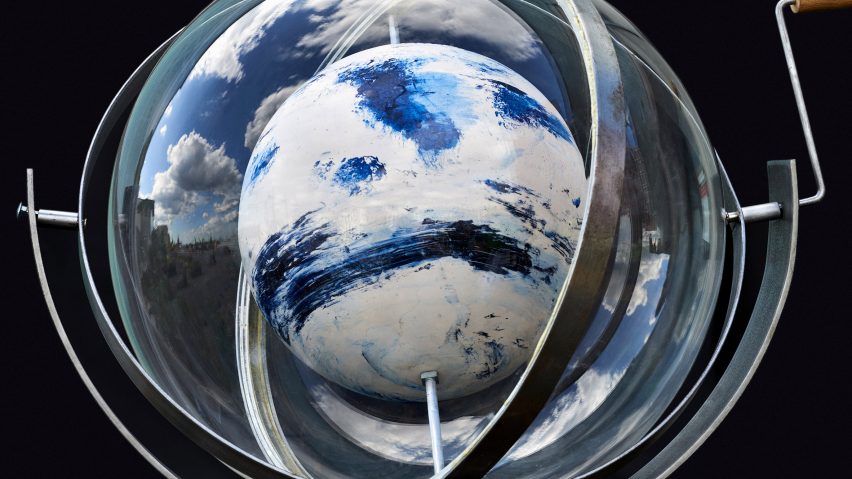
Britt Berden uses laboratory equipment to visualise the impact of climate engineering
Dutch designer Britt Berden has created a pair of models that show what happens when scientists try to counter global warming.
Presented at this year's Dutch Design Week, Plan B is a project that aims to educate people on the process and effects of climate engineering – and to help them understand the potentially harmful consequences.
"We are inhabitants of this world and have to think about what values we apply in governing it but also how we take responsibility on fighting climate change together," Berden told Dezeen.
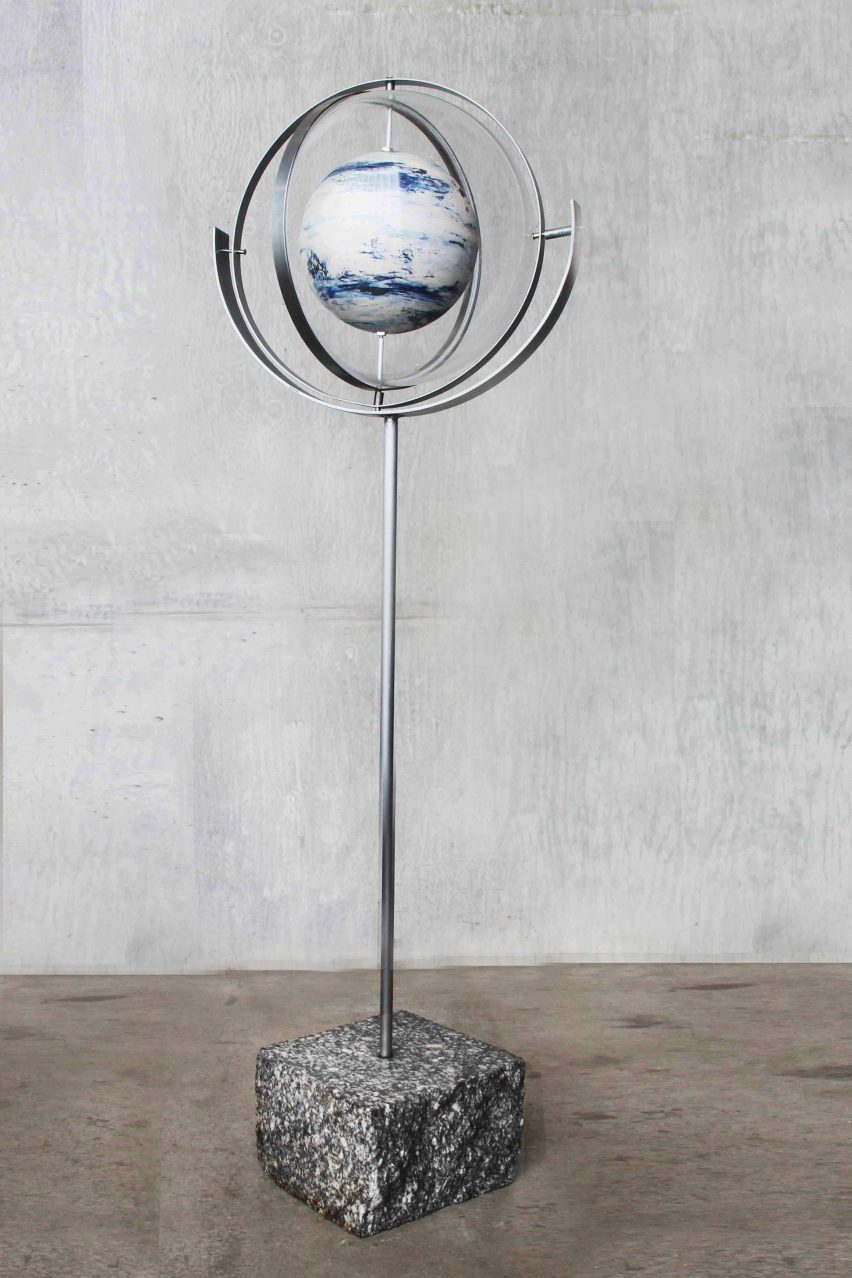
The designer worked with climate experts to develop two installations that visualise the two primary methods of climate engineering: greenhouse gas removal and solar radiation management.
"I wanted to create my insights into objects to materialise climate engineering, but at the same time, reflect on today's world," she explained.
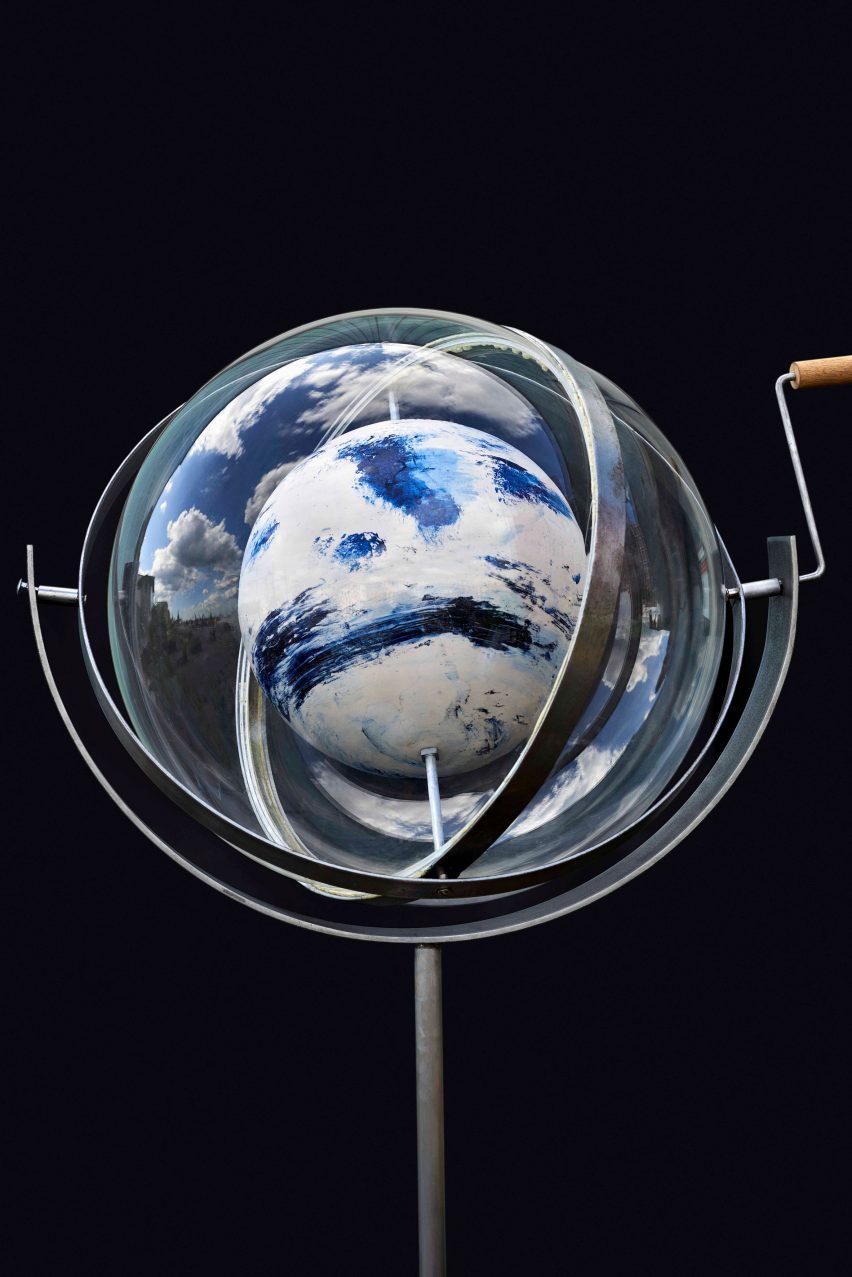
The first installation, Planet Rewind, is a simulation model of a globe surrounded by metal hoops.
Controlled by a handle, it rotates on an axle to demonstrate the process of carbon dioxide removal, also known as aerosol injection – a method of offsetting global warming through the release of heat from the atmosphere, by spraying aerosols back into space.
By turning the handle on the metal frame, a user is given the power to spin the Earth. Once in motion, the globe becomes out of focus – and it becomes impossible to see the consequence of the action.
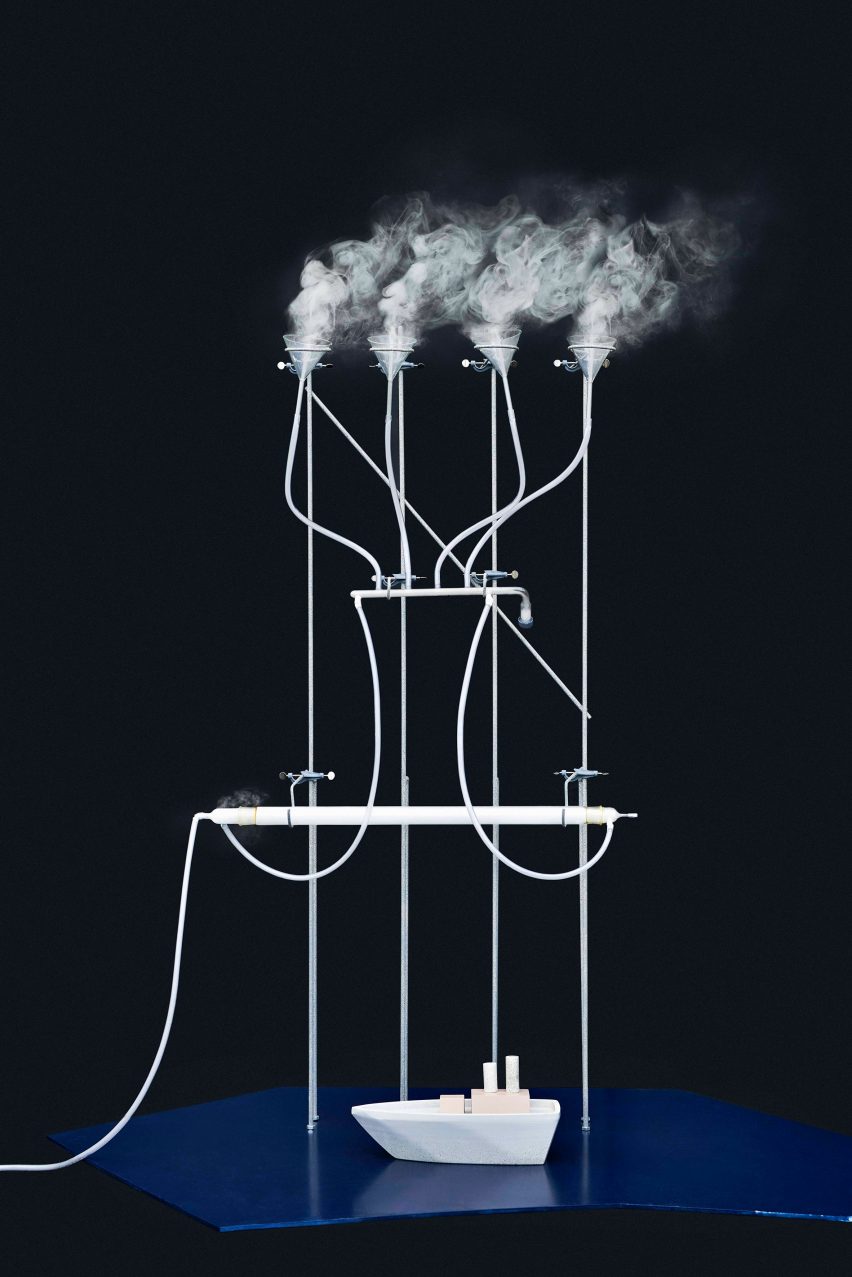
The second installation, named Cloud Whitening, It demonstrates the concept of solar radiation management, also known as marine cloud brightening.
In this method, scientists use salt crystals from ocean water to mix with clouds in the atmosphere. This makes the clouds brighter and more reflective, increasing the amount of solar rays they are able to reflect away from the Earth's surface.
Berden represents this using a series of glass funnels, held together by metal clamps and connected with plastic tubing.
A smoke machine pumps smoke through the tubes, which then filters out through the funnels and into the air.
"In this object, I criticise the way climate scientists depend on climate models and small laboratory experiments," Berden said.
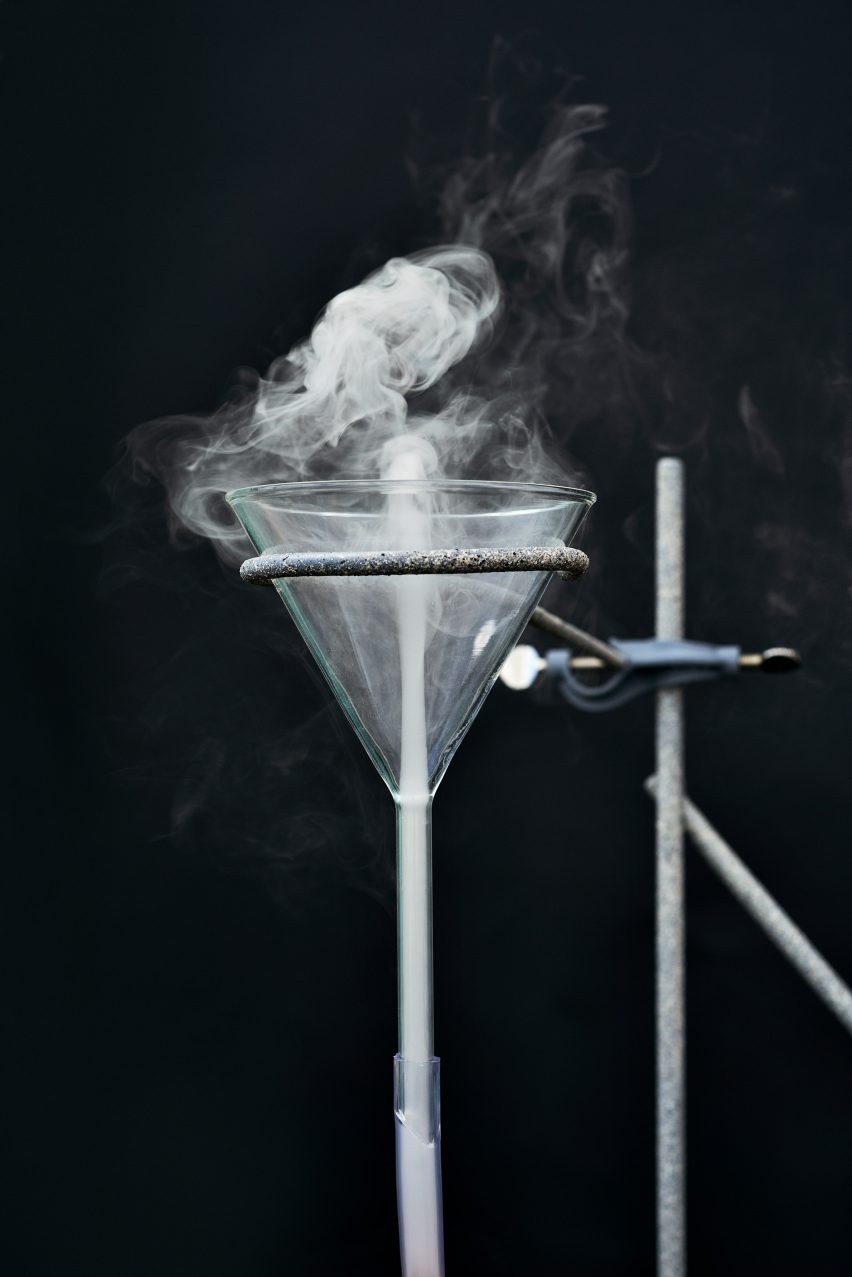
Climate change was one of five global issues addressed as part of Dezeen's Good Dezeen for a Bad World initiative, launched with a series of five talks during Dutch Design Week.
The talks looked at whether designers have the power to solve these issues. Berden believes they do.
"Climate change is the most unpredictable and uncertain issue at the moment," she said. "We have to take responsibility to address this issue for ourselves but also for future generations."
"Designers have the power to imagine a better world or create awareness by being critical about tomorrow's environmental challenges."
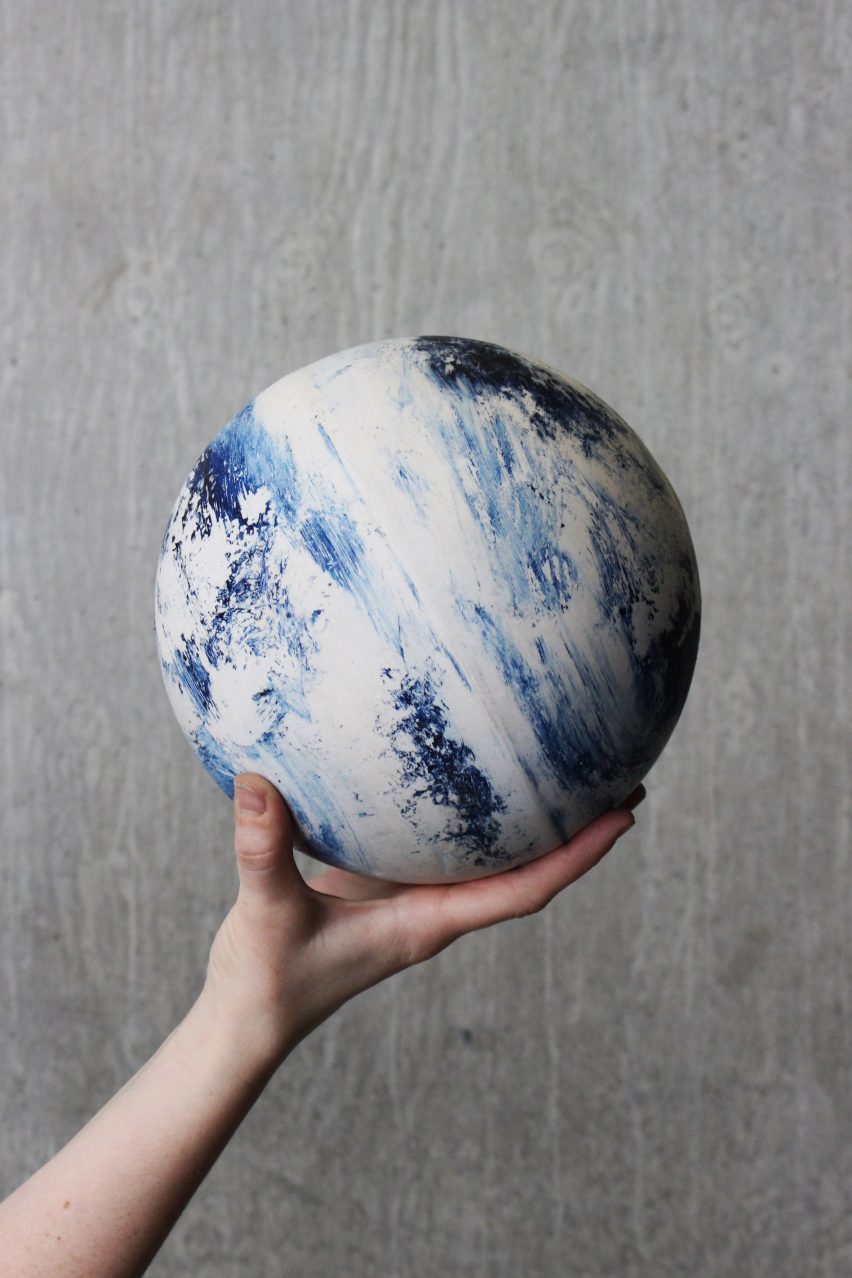
However she thinks it is important that people understand the implications of techniques like climate engineering, before we employ them on a global scale.
Her use of scientific equipment to create her models is a reference to the idea that laboratory tests can't always be scaled up.
"Scientists rely heavily on scientific experiments performed in labs, which is very ironic to me because they are considering modifying the planet on a global scale," she explained.
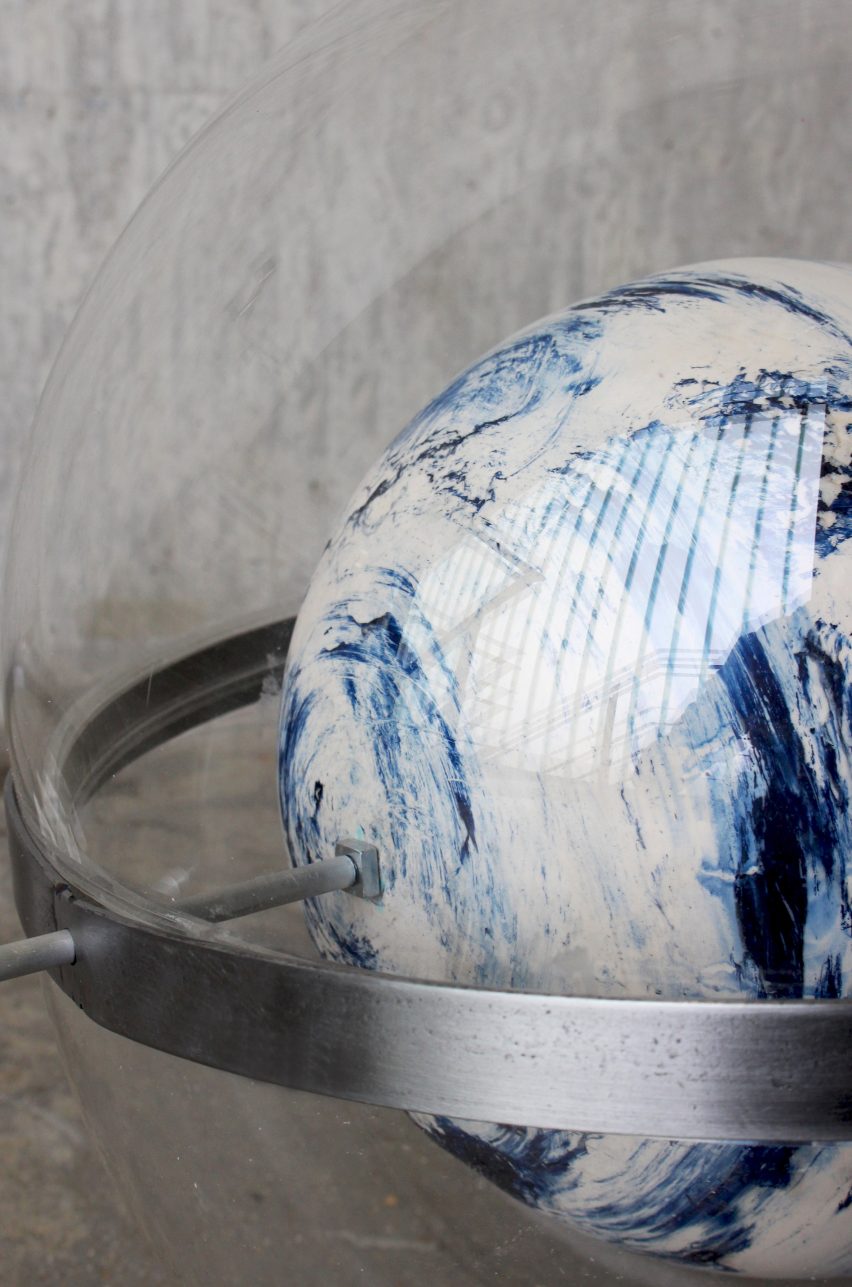
She hopes her installations will raise awareness about climate engineering, and open up a wider discussion on the topic.
"My aim is to make the scientific complexity approachable for a larger audience to understand it but also get the public involved in the discussion," she said.
"These artefacts can be implemented to educate and inform different generations about the complexity of the topic and to inform the public about these realistic but dangerous proposals to 'fix' the planet."
Dutch Design Week took place in Eindhoven from 21 to 29 October 2017. Other environmentally minded projects on show included a clay-like material made using discarded plastic.